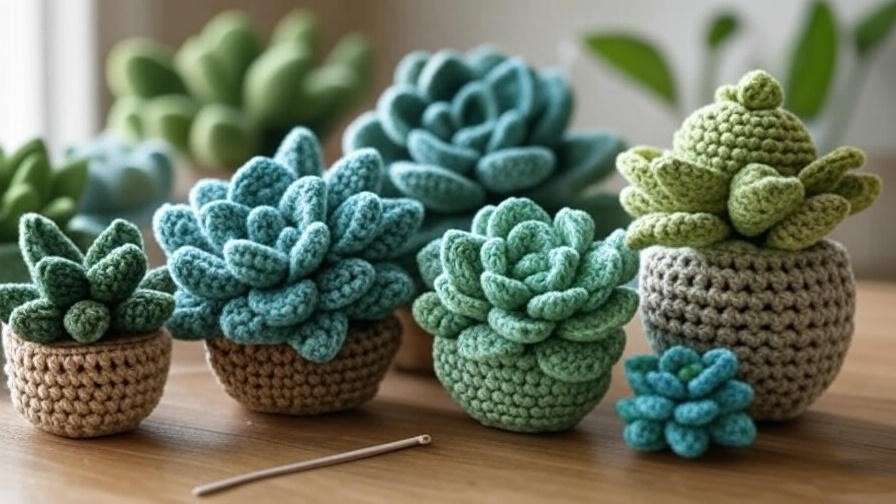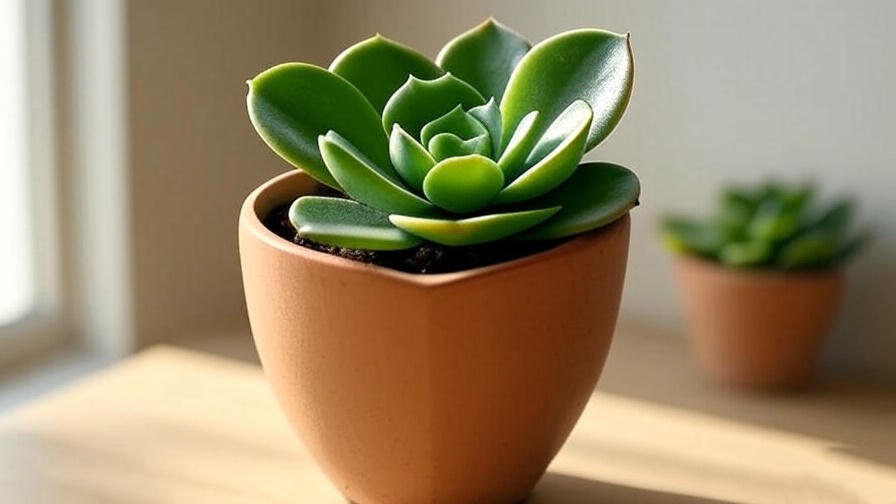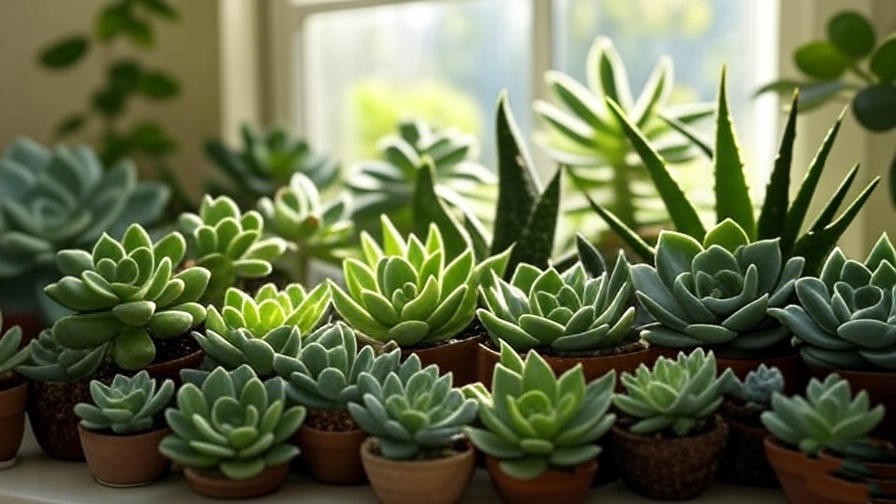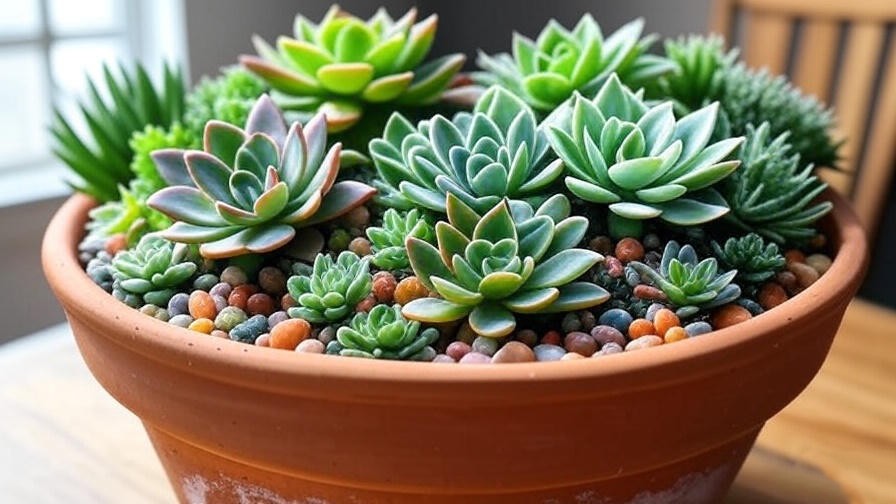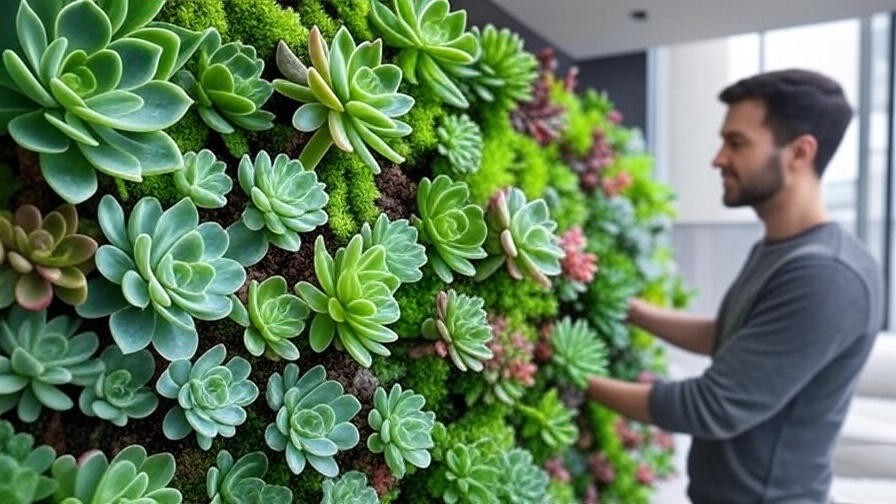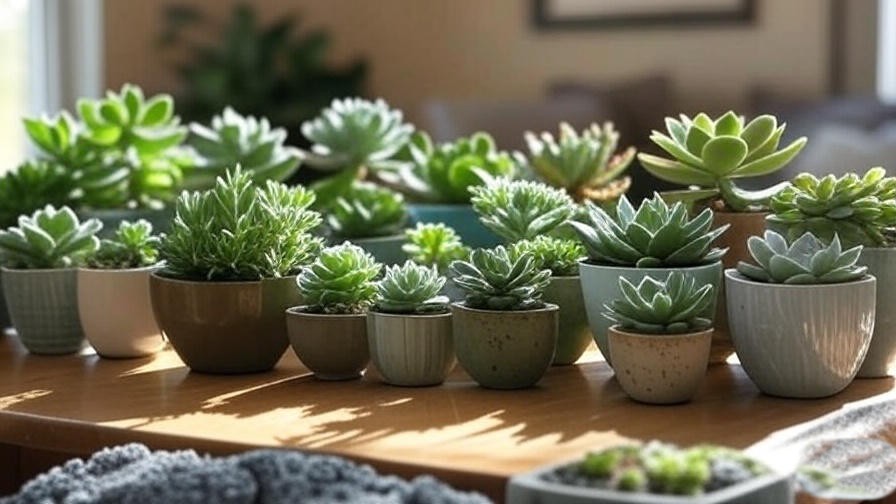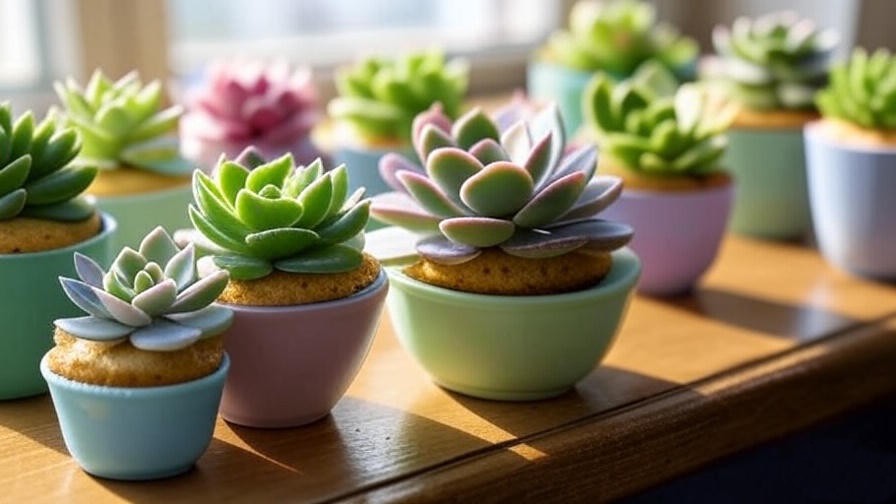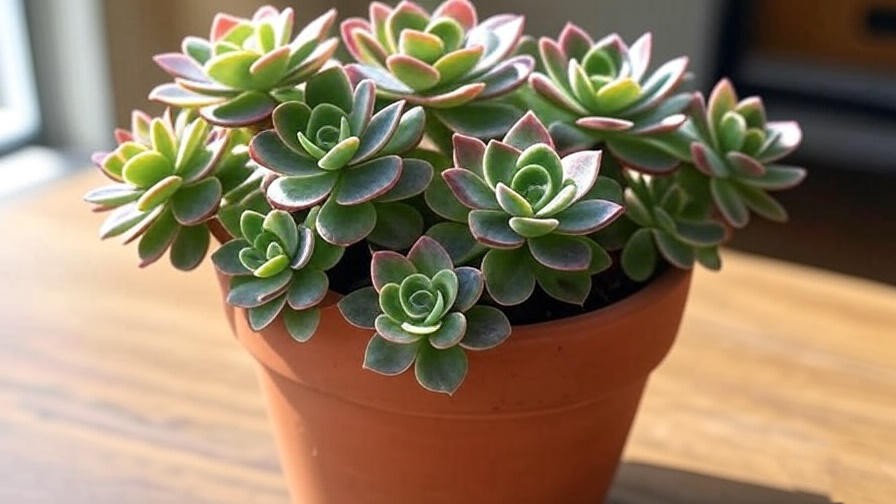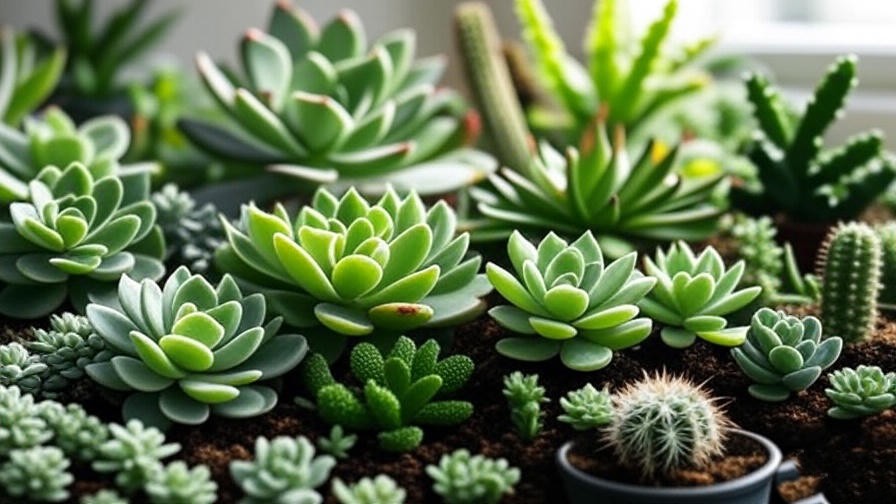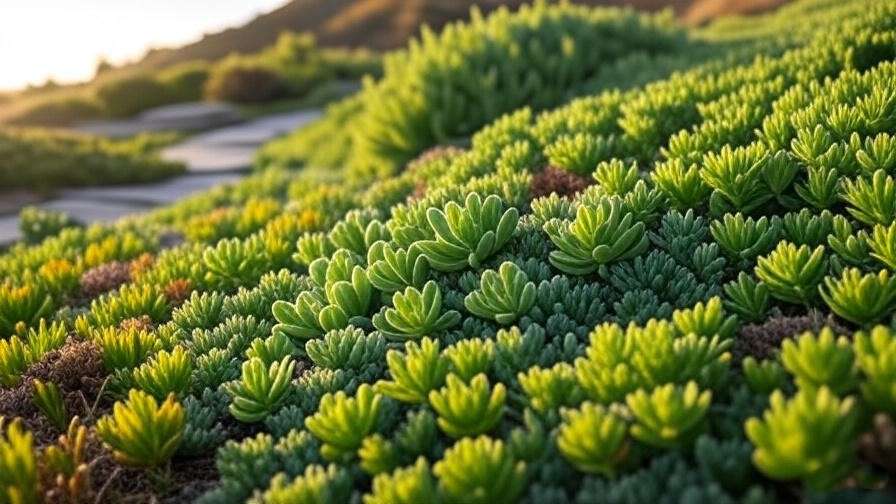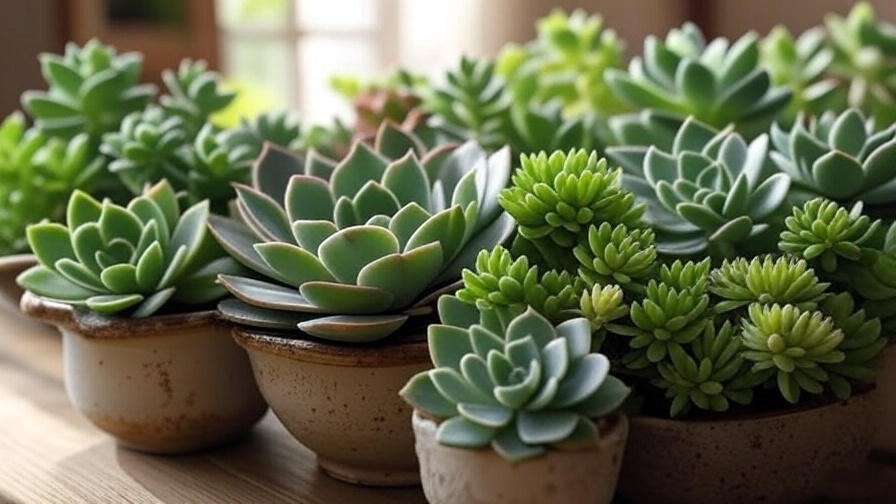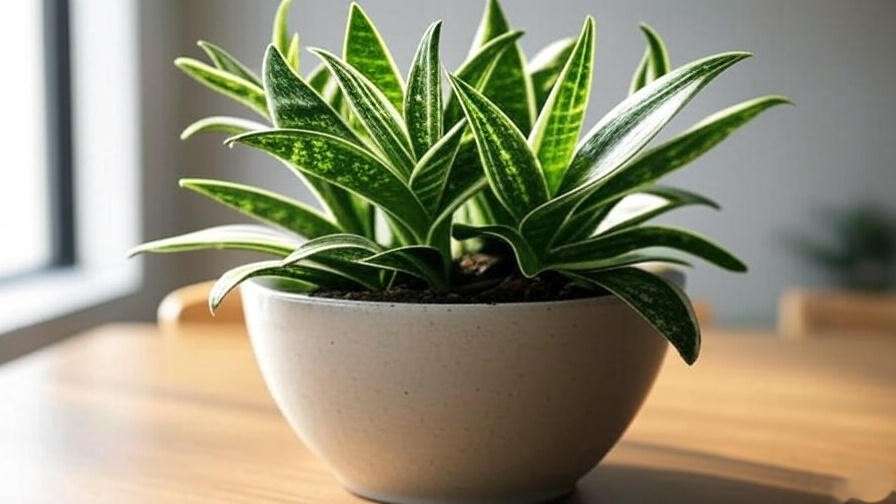Picture this: a vibrant, evergreen corner in your home filled with lush succulents that never wilt, require no watering, and reflect your unique style. Sounds like a plant lover’s dream, right? Welcome to the world of crochet succulents—a perfect blend of crafting creativity and low-maintenance indoor plant decor. As a crochet enthusiast with over 15 years of experience and a passion for indoor gardening, I’ve taught countless workshops on creating eco-friendly, handmade decor that solves real problems for plant lovers. Whether you’re battling low light, a busy schedule, or simply want a pet-safe alternative, this guide offers easy, beginner-friendly crochet succulent patterns to transform your space with effortless charm. Let’s dive into crafting stunning, maintenance-free “plants” that elevate your home’s aesthetic.
What Are Crochet Succulents and Why They’re Perfect for Indoor Decor
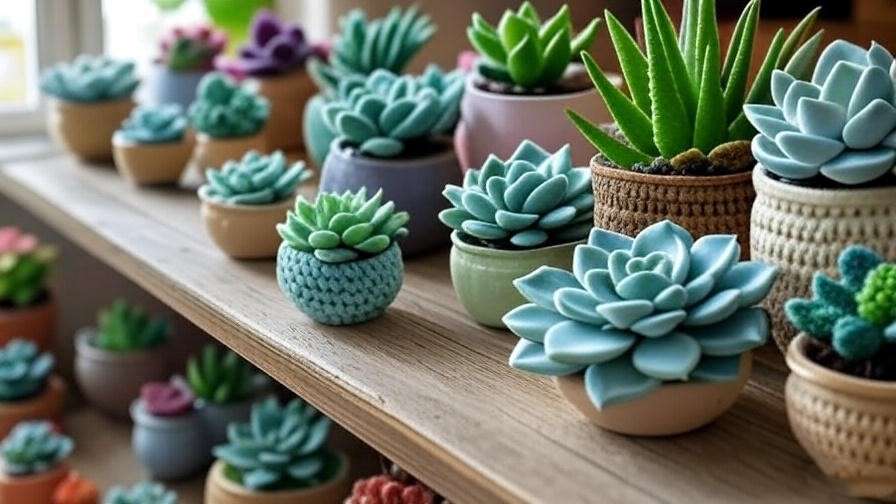
Understanding Crochet Succulents: A Blend of Craft and Nature
Crochet succulents are handmade replicas of popular succulent plants, meticulously crafted from yarn using basic crochet techniques like single and double stitches. They mimic the look of real succulents—think echeveria, aloe, or string of pearls—but without the need for soil, sunlight, or watering. Drawing from my experience leading crochet workshops, I’ve seen how these creations combine the calming, meditative benefits of crafting with the biophilic appeal of greenery, making them a standout choice for modern indoor spaces.
The Rise of Crochet Succulents in Home Decor Trends
The popularity of crochet succulents has soared, fueled by the global crafting boom. According to a 2023 craft industry report, the crochet market has grown by 12% annually, with handmade decor trending on platforms like Pinterest and Etsy. Originating from amigurumi, a Japanese art of crocheted figures, these faux plants have become a staple in boho, minimalist, and sustainable home styling. Their rise reflects a broader shift toward personalized, eco-conscious decor that resonates with millennials and Gen Z.
How Crochet Succulents Solve Real Indoor Plant Challenges
Real succulents, while low-maintenance, still demand specific conditions—bright light, precise watering, and pest control. Crochet succulents eliminate these hurdles. They’re ideal for:
- Low-light spaces: Perfect for apartments or offices with minimal sunlight.
- Busy lifestyles: No watering or pruning required.
- Pet safety: Non-toxic, unlike some real plants.
- Allergy concerns: Dust-free alternatives for sensitive households.
By offering a sustainable, hassle-free option, crochet succulents align with the growing demand for eco-friendly decor.
Benefits of Crochet Succulents for Low-Maintenance Indoor Plant Lovers
Zero Maintenance, Endless Appeal
Unlike real plants, crochet succulents never fade or die. They retain their vibrant colors and shapes indefinitely, making them a one-time investment for lasting decor. From my experience, a single crocheted echeveria can remain pristine for years with minimal care, offering unmatched durability.
Therapeutic and Customizable Crafting Experience
Crocheting is a proven stress-reliever. Studies, like one from the Journal of Occupational Therapy (2021), show crafting reduces cortisol levels by up to 20%. Creating succulents lets you customize colors, sizes, and textures to match your decor vision—whether it’s a soft green aloe or a bold purple echeveria. My workshops consistently highlight how this process fosters mindfulness and creativity.
Eco-Friendly and Budget-Savvy Option
Using recycled or organic yarns, crochet succulents reduce waste and environmental impact. Compared to real plants, which may need frequent replacement, a single crochet project can cost as little as $5-$10 in materials, saving money over time while supporting sustainable practices.
Versatility in Home Styling
Crochet succulents adapt to any aesthetic. Display them on shelves, in terrariums, or as hanging planters. Mix them with real plants for a hybrid look that balances maintenance and beauty. Their versatility makes them a favorite for styling small spaces or seasonal displays.
Essential Materials and Tools for Crochet Succulent DIY Projects
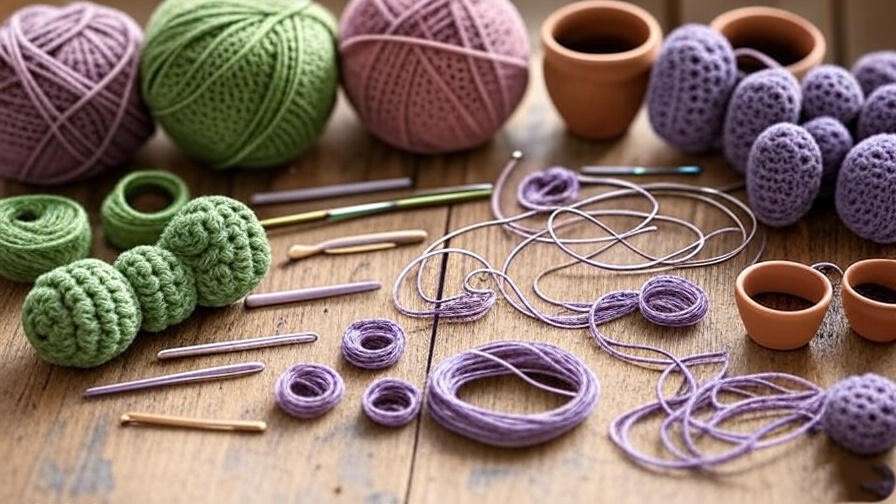
Yarn Selection: Choosing the Right Fibers for Realistic Textures
The key to lifelike crochet succulents lies in yarn choice. Based on my expertise:
- Acrylic yarn: Affordable, widely available, ideal for beginners.
- Cotton yarn: Offers a matte finish for authentic succulent textures.
- Color palettes: Greens (sage, emerald), purples, and dusty pinks mimic echeveria, aloe, or sedum.
Pro tip: Opt for medium-weight (worsted) yarn for a balance of structure and softness.
Hooks, Stuffing, and Accessories
- Crochet hooks: Sizes 3.5mm (E) to 4mm (G) work best for tight, defined stitches.
- Stuffing: Polyfill for plump shapes; avoid overstuffing to maintain realism.
- Accessories: Floral wire for shaping leaves; small pots for display.
Recommended brands: Clover hooks, Fairfield polyfill.
Beginner-Friendly Supply List with Budget Options
| Item | Purpose | Affordable Brands/Alternatives |
|---|---|---|
| Worsted yarn | Main material for leaves | Lion Brand Vanna’s Choice ($4) |
| 4mm crochet hook | Creating tight stitches | Susan Bates ($2) |
| Polyfill stuffing | Filling succulent centers | Walmart brand ($5) |
| Floral wire | Shaping leaves or stems | Dollar store wire ($1) |
| Small clay pots | Display bases | Thrift stores or IKEA ($2) |
Step-by-Step Easy Crochet Succulent Patterns
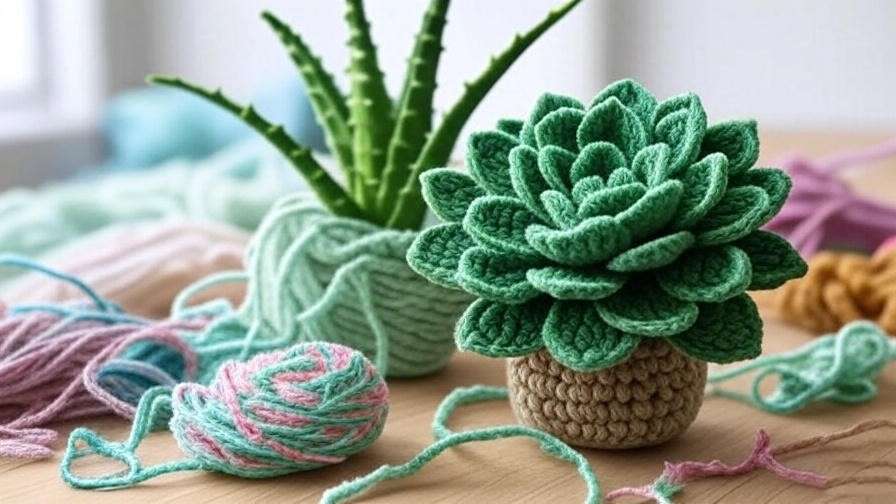
Pattern 1: Basic Echeveria Succulent (Beginner Level)
Materials Needed
- Worsted-weight cotton yarn (sage green, dusty pink)
- 4mm crochet hook
- Polyfill stuffing
- Scissors, tapestry needle
- Small clay pot (optional)
Step-by-Step Instructions
- Magic Ring: Create a magic ring, chain 1, 6 single crochet (sc) into ring. Pull tight. (6 stitches)
- Round 1: 2 sc in each stitch around. (12 stitches)
- Round 2: [1 sc, 2 sc in next stitch] repeat 6 times. (18 stitches)
- Leaves (make 8-10): Chain 6, sc in 2nd chain from hook, half-double crochet (hdc) in next, double crochet (dc) in next 2, 3 dc in last chain. Work down opposite side: dc in next 2, hdc, sc. Fasten off.
- Assembly: Sew leaves in a spiral around the center, starting with smaller leaves at the top.
- Finishing: Stuff lightly, secure in a pot with glue or stitches.
Assembly and Finishing Touches
Use floral wire to gently curve leaves for a natural look. Add a contrasting yarn color for subtle gradients. Place in a small pot for a polished display.
Pattern 2: Aloe Vera Plant (Intermediate with Variations)
Materials Needed
- Worsted-weight acrylic yarn (emerald green)
- 3.5mm crochet hook
- Polyfill stuffing
- Floral wire for structure
Detailed Crochet Steps
- Base: Magic ring, 6 sc, increase to 12 stitches as above.
- Leaves (make 6-8): Chain 10, sc in 2nd chain, hdc in next 2, dc in next 4, hdc, sc. Work opposite side similarly. Fasten off.
- Spikes: Surface crochet small slip stitches along leaf edges for texture.
- Assembly: Sew leaves in a starburst pattern, inserting wire for rigidity.
Tips for Adding Realistic Spikes
Use a smaller hook (2.5mm) for tighter surface stitches. Alternate spike sizes for authenticity.
Pattern 3: String of Pearls Hanging Succulent (Fun Twist for Decor)
Materials Needed
- Fine cotton yarn (light green)
- 3mm crochet hook
- Small beads or stuffing
- Hanging basket or hoop
Pattern Breakdown
- Pearls (make 20-30): Magic ring, 6 sc, increase to 12, then decrease back to 6. Stuff lightly or insert a bead.
- Strands: Chain 30-50, attach pearls every 3-4 chains with slip stitches.
- Assembly: Join multiple strands to a crocheted base or hoop.
Hanging Assembly Guide
Secure strands to a small macramé hoop or basket. Vary strand lengths for a cascading effect.
Common Mistakes to Avoid in Each Pattern
- Overstuffing: Leads to unnatural shapes; use minimal filling.
- Loose tension: Tighten stitches for defined edges.
- Color mismatches: Test yarn shades under natural light.
- Skipping blocking: Lightly steam leaves to set shapes.
Advanced Techniques to Elevate Your Crochet Succulents
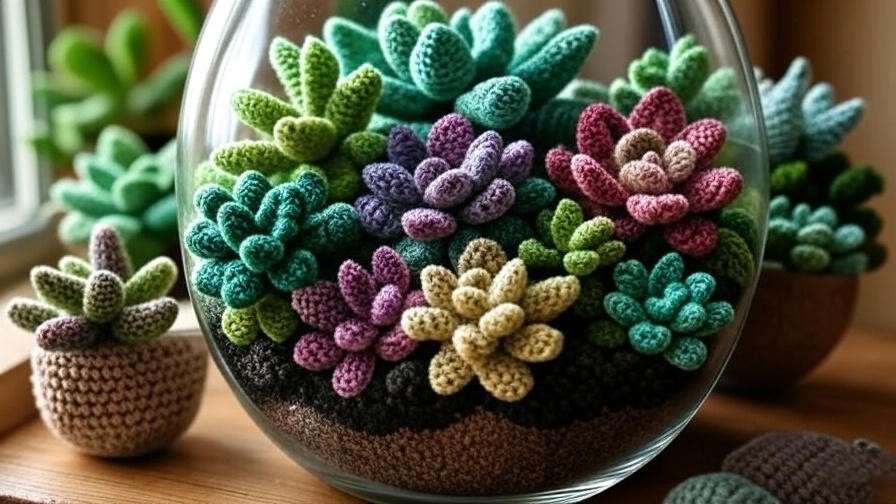
Adding Realistic Details: Textures, Colors, and Shapes
To make your crochet succulents stand out, focus on replicating the intricate details of real plants. Based on my experience teaching advanced crochet techniques, here are some expert methods:
- Surface Crochet for Veins: Use a smaller hook (2.5mm) to add slip stitches or chain stitches on leaf surfaces, mimicking the subtle veins of echeveria or aloe. This adds depth without overwhelming the design.
- Color Blending for Gradients: Transition between shades (e.g., green to pink) by switching yarn mid-row. For example, in an echeveria, start with a sage green base and blend into dusty pink tips for a realistic ombre effect.
- Shaping with Wire: Insert floral wire into leaves during assembly to create gentle curves or upright aloe spikes. Secure with small stitches to maintain flexibility. These techniques, honed through years of crafting, ensure your succulents look lifelike and professional.
Incorporating Pots and Displays
A well-chosen display elevates your crochet succulents from craft to art. Consider:
- Crocheted Pots: Use sturdy cotton yarn to crochet a simple pot base (e.g., a flat circle with single crochet walls). Add texture with bobble stitches to mimic terracotta.
- Upcycled Bases: Repurpose small thrift store containers or mason jar lids as bases. Glue your succulent securely for a rustic look.
- Themed Displays: Create a desert-inspired vignette with sand-colored fabric and pebbles, or go modern with sleek white ceramic pots. In my workshops, I’ve seen students transform simple shelves into stunning displays by pairing crochet succulents with natural elements like driftwood.
Scaling Up: Creating a Crochet Succulent Garden
For a show-stopping effect, combine multiple succulents into a full “garden.” Here’s how:
- Plan Your Composition: Mix shapes (rosette echeveria, spiky aloe, trailing string of pearls) for visual interest.
- Vary Sizes: Craft small, medium, and large succulents to mimic natural growth patterns.
- Group Strategically: Place taller plants like aloe in the back, with low rosettes in front. Add trailing pearls for balance.
- Use a Base: A shallow tray or wooden box filled with decorative moss or gravel ties the arrangement together. This approach, inspired by my own home decor projects, creates a cohesive, eye-catching display that rivals real plant arrangements.
Care and Maintenance for Your Crochet Succulent Creations
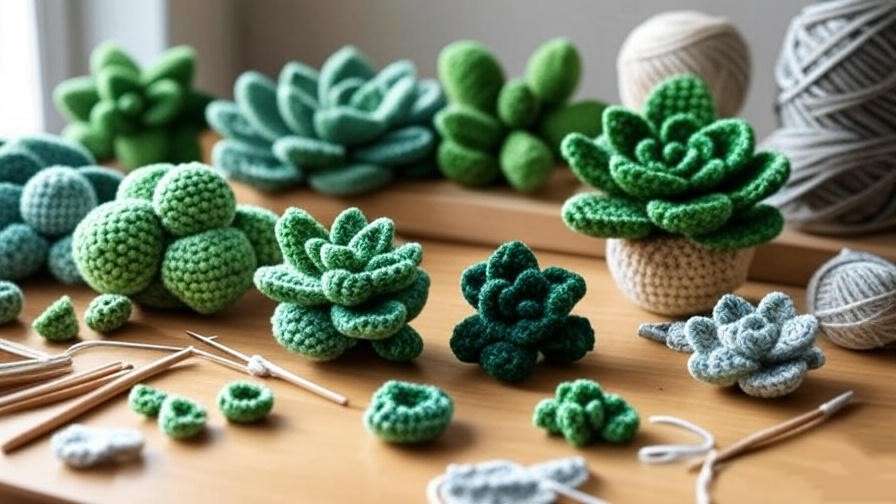
Keeping Them Dust-Free and Vibrant
Crochet succulents are low-maintenance, but they still need occasional care:
- Gentle Cleaning: Dust with a soft brush or use a handheld vacuum on low suction. For deeper cleaning, hand-wash in lukewarm water with mild soap, then air-dry.
- Spot Treatment: For stains, dab with a damp cloth and mild detergent. Avoid soaking to protect stuffing.
- Storage: Store in a dry, shaded area to prevent yarn fading. Use breathable fabric bags, not plastic, to avoid moisture buildup.
Longevity Tips from a Crochet Expert
To ensure your creations last for years:
- Reinforce Seams: Double-stitch leaves to the base to prevent unraveling, especially for heavily handled pieces.
- Fade Prevention: Use UV-resistant yarns (like certain acrylic blends) or store away from direct sunlight.
- Repair Techniques: If a leaf detaches, reattach with a tapestry needle and matching yarn. For frayed edges, trim carefully and seal with a small dab of fabric glue. These tips, drawn from my experience repairing student projects, keep your succulents looking fresh.
Integrating with Real Indoor Plants
For a hybrid aesthetic, mix crochet succulents with low-maintenance real plants like pothos or snake plants:
- Humidity Benefits: Real plants increase humidity, creating a healthier indoor environment, while crochet succulents add visual variety.
- Aesthetic Balance: Place crochet pieces in low-light corners where real plants struggle, ensuring a cohesive look.
- Seasonal Flexibility: Swap crochet succulents for real ones during holidays for themed displays (e.g., red and green succulents for Christmas).
Expert Tips and Creative Inspirations
Pro Tips for Perfect Results
- Maintain Consistent Tension: Use a tension ring or practice holding yarn evenly to avoid loose, floppy leaves.
- Test Colors in Natural Light: Yarn shades can look different indoors. Check under daylight to ensure realistic hues.
- Use Stitch Markers: Mark the start of rounds to avoid losing track, especially in spiral patterns.
- Block Your Work: Lightly steam leaves with an iron (low heat, no direct contact) to set shapes and enhance professionalism.
- Experiment with Scale: Try mini succulents for jewelry or large ones for statement pieces. These insights come from years of refining techniques in my crochet classes.
Real-Life Examples and Reader Success Stories
In my workshops, students have transformed their spaces with crochet succulents. One participant, Sarah from Seattle, shared how her crochet echeveria display turned a dim apartment corner into a vibrant focal point. Another, Mark, a beginner, crafted a string of pearls for his office, earning compliments for its creativity. These stories highlight how accessible and impactful this craft can be, even for novices.
Seasonal and Themed Variations
- Holiday Themes: Use red and white yarns for Christmas succulents or pastel shades for Easter displays.
- Boho Chic: Pair with macramé hangers and earthy tones for a trendy vibe.
- Minimalist Modern: Opt for monochromatic yarns (e.g., all white) in sleek pots for a clean, contemporary look. These ideas, inspired by current decor trends, keep your projects fresh and relevant.
Frequently Asked Questions (FAQs)
What yarn is best for beginners making crochet succulents?
Acrylic worsted-weight yarn, like Lion Brand Vanna’s Choice, is ideal for beginners due to its affordability and ease of use. Cotton yarn offers a more realistic texture but requires tighter tension.
How long does it take to crochet a succulent?
A basic echeveria takes 2-3 hours for beginners, while intermediates can complete it in 1-2 hours. Complex designs like string of pearls may take 4-6 hours.
Can I sell my crochet succulents?
Yes, but ensure patterns are your own or licensed for commercial use. Platforms like Etsy are great for selling handmade decor, with succulents often fetching $10-$30 each.
Are there free patterns available online?
Many blogs and platforms like Ravelry offer free crochet succulent patterns. Always credit designers and check for commercial use permissions.
How do I make crochet succulents pet-safe?
Use non-toxic materials (cotton or acrylic yarn, polyfill stuffing) and secure all parts tightly to prevent loose pieces. Avoid small beads if pets might chew them.
What’s the best way to display crochet succulents?
Group in small pots, terrariums, or hanging baskets. Mix with real plants or decorative elements like pebbles for a polished look.
Can I use crochet succulents outdoors?
They’re best kept indoors to avoid weather damage. If used outside, place in shaded, covered areas and treat with a water-resistant spray.
How do I fix mistakes in my crochet succulent?
Unravel to the error and redo, or cover minor flaws with extra leaves. For loose stitches, tighten with a smaller hook and secure with a knot.
Conclusion
With these easy crochet succulent patterns and expert tips, you’re ready to craft a low-maintenance, eco-friendly indoor plant display that’s as beautiful as it is practical. From the beginner-friendly echeveria to the cascading string of pearls, these projects solve the challenges of traditional plant care while sparking creativity. As a crochet and indoor plant enthusiast, I’ve seen firsthand how these creations transform spaces and bring joy to crafters. Start with a single succulent today, share your work, and explore more guides on our site for endless inspiration. Your handmade oasis awaits!

